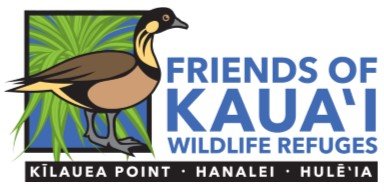ʻUaʻu kani
Each year around mid-March ʻuaʻu kani, or Wedge-tailed Shearwaters, return to Kīlauea Point NWR and other coastal areas around the Island of Kauaʻi. They fly here from waters near the Gulf of Panama to nest in burrows and under rocks or vegetation as they seek to raise a chick.
ʻUaʻu kani are the largest of the tropical shearwaters and feature grey-brown plumage on the back, head and upper wing, and white plumage below. They have a wedge-shaped tail, which may help them to glide in the air, and legs that are set far back on their body as an adaptation for swimming. ʻUaʻu kani feed predominantly on fish, squid and crustaceans and can dive up to 46 feet as they fish!
After four years of age, ʻuaʻu kani will be ready to mate and will return to the same colony site where they were raised. They are monogamous and form pair bonds that can last for several years. For those that have returned previously, they will reunite with their mate at the same burrow from the previous year and, in June, the female will lay a single egg. Both parents will take turns incubating and, when the chick hatches in August, they will share feeding duties.
After laying, the male usually undertakes the first incubation period. Then, both sexes will take turns incubating the egg in stretches that can last up to 13 days. Total incubation takes around 50 days. After hatching, the chick is brooded for up to 6 days, until it can regulate its own body temperature. Then it will be left alone in the nest while both parents hunt for food. The chick is initially fed with stomach oil, an energy-rich, waxy oil of digested prey created in the parent's gut and will later “graduate” to solids.
ʻUaʻu kani are crepuscular, which means that they are active primarily during the twilight period. They have a very distinctive cry, which gives them their name meaning “moaning petrel.” Click below to enjoy a clip of their vocalizations in the bushes of Kīlauea Point NWR.
ʻUaʻu kani, like other ground nesting seabirds, are extremely vulnerable to predation from free roaming cats and dogs. Please help our native seabirds by keeping dogs on a leash, especially when hiking or camping along the coast, keeping cats indoors, not supporting feral cat colonies and by being very mindful when hiking in coastal areas.
We invite you to visit us in the evening hours at the Kīlauea Point NWR Overlook, located at the end of Kīlauea Road, to enjoying seeing ʻuaʻu kani zip back to their burrows and hearing their haunting calls echo across the Refuge.

